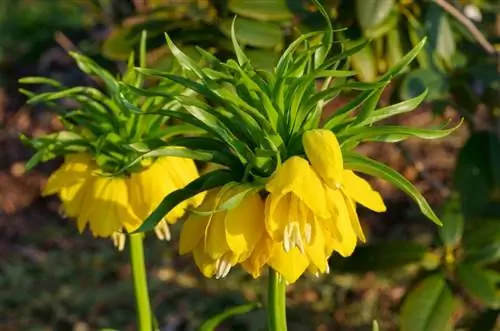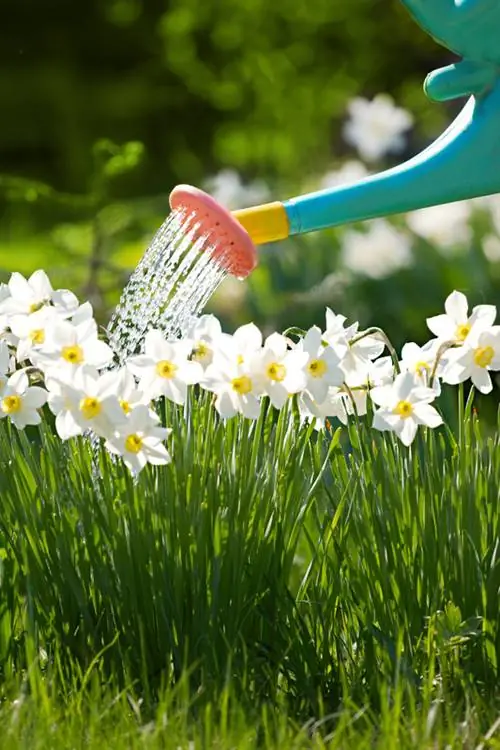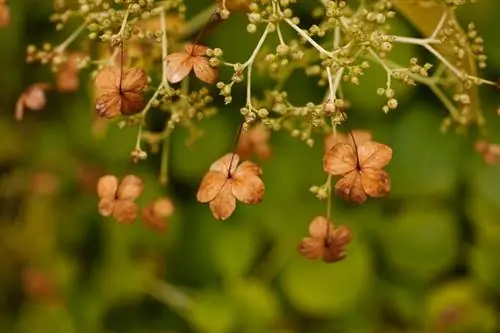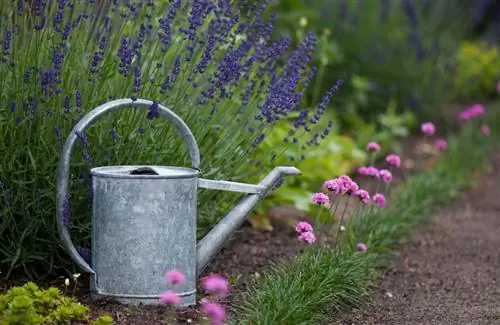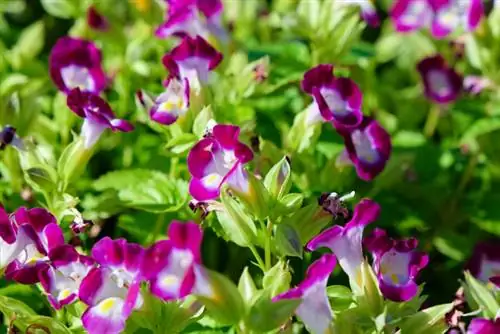- Author admin [email protected].
- Public 2023-12-16 16:46.
- Last modified 2025-01-23 11:20.
In the regions of origin in the area of former Persia and Turkey, the imperial crown (Fritillaria imperialis) sometimes grows in relatively inhospitable regions. The plant has been one of the most popular flowering plants in European gardens for centuries, as it is undemanding and easy to care for in a suitable garden.

How do you properly care for an imperial crown?
Proper care for an imperial crown includes: watering when it is dry during the flowering period, fertilizing in spring with complete fertilizer or compost, not digging up or digging up, cutting off any wilting parts after flowering and avoiding waterlogging. Pests such as lily chicken can be removed by hand.
How much water does the imperial crown need?
Since the imperial crown can easily overwinter outdoors in Central Europe, the bulbs are planted directly outdoors at a depth of around 20 to 30 centimeters. In contrast to potted plants, imperial crowns therefore need to be watered less regularly, even in summer. However, it doesn't hurt to provide balance with a watering can, especially during flower growth in spring when the drought is persistent.
Should the imperial crown be transplanted every year?
Contrary to some opinions, the imperial crown bulbs should not be dug out of the ground after the flowering period, as dry overwintering of the bulbs indoors rarely leads to successful new growth. Transplanting in the garden is also not necessary if there are no problems with the flowering due to a lack of location factors.
When and how does the imperial crown have to be cut?
Immediately after flowering, the upper parts of the withering flowers can be removed if you do not want seeds to ripen. The lower part should remain until late summer so that enough nutrients can be stored in the bulbs for the next growing season. Only when they wilt on their own should the lower parts of the flower stalks be cut off.
Which pests attack the imperial crown?
The approximately 8 millimeters long and red-colored lily chickens feed on the leaves of the imperial crown as larvae and beetles. You can remove these by simply picking them up by hand.
Which deficiency symptoms often occur with the imperial crown?
Basically, the imperial crown is not very susceptible to diseases, but the bulbs can rot in locations with waterlogging. You can remedy this by loosening the soil and planting bulbs at a slight angle so that rainwater does not remain on the top of the bulbs.
When is the imperial crown fertilized?
The imperial crown is ideally fertilized:
- during the main growing season in spring
- with suitable complete fertilizer (€47.00 on Amazon) from stores
- or with seasoned compost
How and where is the imperial crown optimally overwintered?
The imperial crown can easily overwinter directly in the ground. Overwintering the bulbs dry is harmful and is not recommended.
Tips & Tricks
When caring for the imperial crown, avoid too frequent disruptions by transplanting the bulbs, otherwise you may have to wait a year or two for the plants to bloom again.

